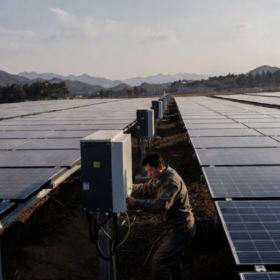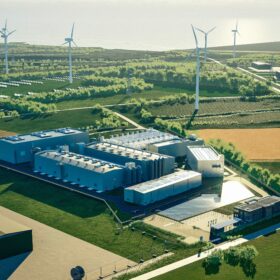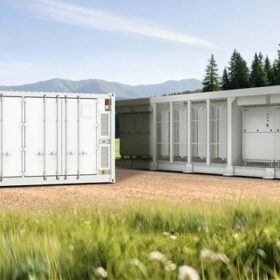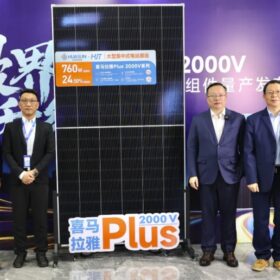South Korean solar inverter industry raises cybersecurity concerns
South Korean solar inverter makers have jointly launched a new association of inverter manufacturers to coordinate domestic production, safeguard local expertise, and address import-driven market issues and grid stability challenges.
The Hydrogen Stream: EWE begins work on 320 MW hydrogen plant in Germany
EWE says construction has started on its 320 MW hydrogen plant in Germany as it seeks regulatory reforms, while Japan Suiso Energy and Kawasaki Heavy Industries have broken ground on a commercial-scale liquefied hydrogen terminal set to begin operations in 2030.
Chinese PV Industry Brief: January-October solar additions reach 252.87 GW
China’s National Energy Administration (NEA) says developers installed 252.87 GW of new PV capacity from January to October 2024, including 12.6 GW in October alone.
Trina Storage launches AC-coupled battery for utility-scale applications
Offered primarily as a 10 MW unit, the new product is also available in a 5.5 MW version for customers with specific requirements.
Atlantic Storm Claudia cuts solar irradiance across Western Europe
In a new weekly update for pv magazine, Solcast, a DNV company, reports that Storm Claudia significantly reduced daily irradiance across the British Isles and the Iberian Peninsula, limiting solar generation.
Spain’s Sumcab launches new cables for PV installations
Spanish manufacturer Sumcab says its new ToughGround and Overground cables are designed for underground and overhead photovoltaic systems throughout the world, offering durability, rapid installation, and a 30-year lifespan.
Austria deploys 1 GW of PV in January-September period
Austria added 1,036 MW of new solar capacity between January and September 2025, down from 1,419 MW over the same period in 2024, as political uncertainty, delayed legislation, and weakening residential demand strain the solar sector.
Huasun unveils 770 W, 2,000 V heterojunction solar module
The Chinese manufacturer said the higher-voltage design of the new module reduces cable, combiner, pile-foundation, and land-use requirements, delivering balance-of-system savings of up to CNY 0.15 ($0.012)/W in western China. The module offers a power output of 730 W to 770 W and a conversion efficiency of up to 24.8%.
UK adds 1.9 GW of solar in 12 months
Latest government figures record 20.7 GW deployed PV capacity at the end of October 2025, up 10.4% in a 12-month period. Surge in contracts for difference (CfD) supported connections recorded in 2025 with more large ground-mount projects in the pipeline.
IRENA seeks consultant for solar feasibility study in Ukraine
The International Renewable Energy Agency (IRENA) is seeking a consultancy to conduct a feasibility study for a utility-scale solar plant in Ukraine, with applications due Dec. 23.










